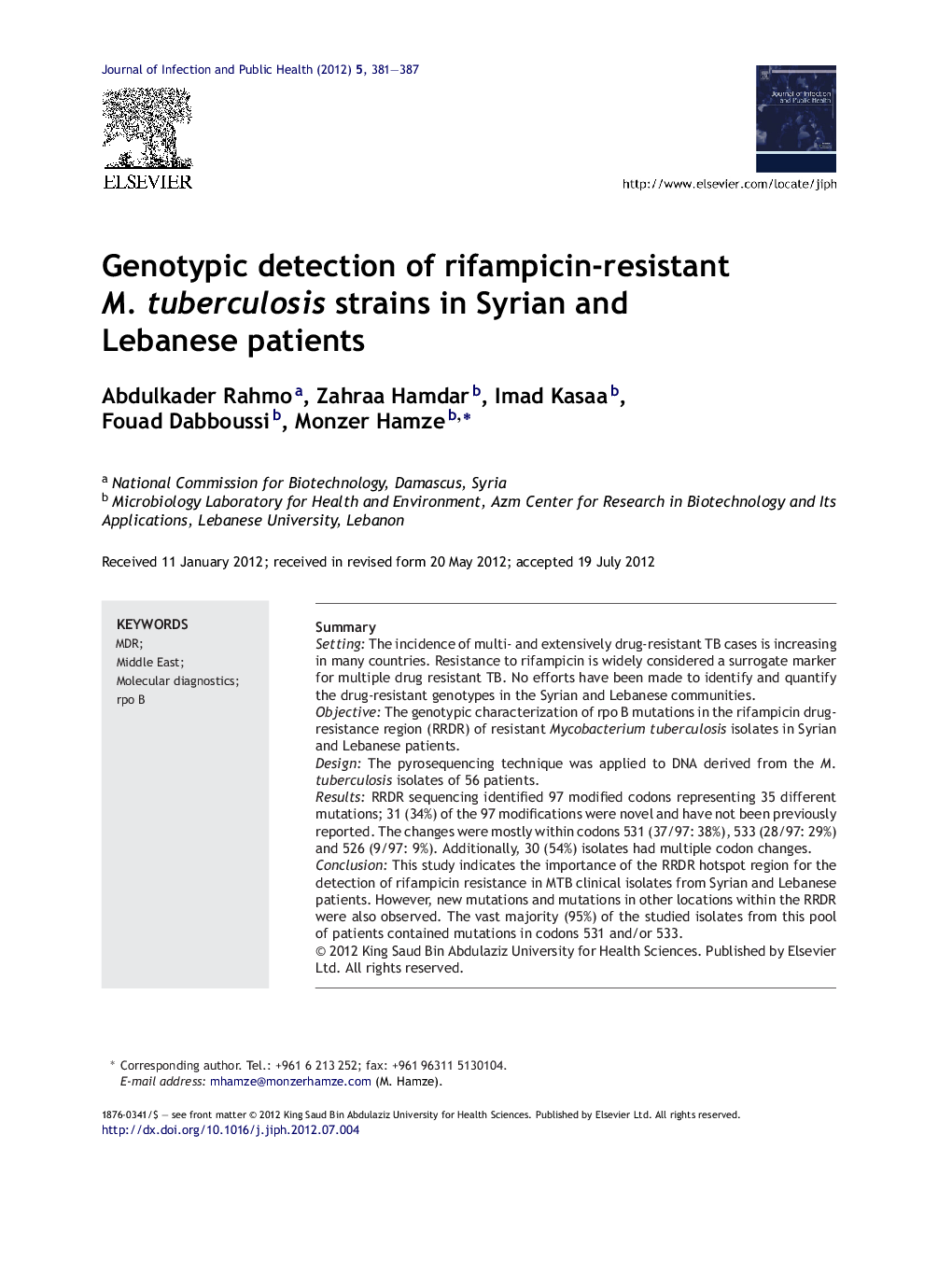| Article ID | Journal | Published Year | Pages | File Type |
|---|---|---|---|---|
| 3406374 | Journal of Infection and Public Health | 2012 | 7 Pages |
SummarySettingThe incidence of multi- and extensively drug-resistant TB cases is increasing in many countries. Resistance to rifampicin is widely considered a surrogate marker for multiple drug resistant TB. No efforts have been made to identify and quantify the drug-resistant genotypes in the Syrian and Lebanese communities.ObjectiveThe genotypic characterization of rpo B mutations in the rifampicin drug-resistance region (RRDR) of resistant Mycobacterium tuberculosis isolates in Syrian and Lebanese patients.DesignThe pyrosequencing technique was applied to DNA derived from the M. tuberculosis isolates of 56 patients.ResultsRRDR sequencing identified 97 modified codons representing 35 different mutations; 31 (34%) of the 97 modifications were novel and have not been previously reported. The changes were mostly within codons 531 (37/97: 38%), 533 (28/97: 29%) and 526 (9/97: 9%). Additionally, 30 (54%) isolates had multiple codon changes.ConclusionThis study indicates the importance of the RRDR hotspot region for the detection of rifampicin resistance in MTB clinical isolates from Syrian and Lebanese patients. However, new mutations and mutations in other locations within the RRDR were also observed. The vast majority (95%) of the studied isolates from this pool of patients contained mutations in codons 531 and/or 533.
► MDR Mycobacterium tuberculosis from Syrian and Lebanese patients was genotyped. ► Rifampicin drug resistance region (RRDR) was pyrosequenced. ► Sequencing identified 97 modified codons representing 35 different mutations. ► 31 (34%) modifications were novel not previously reported. ► Changes were mostly at codons 531, 533, 526. Some isolates had multiple codon changes.
